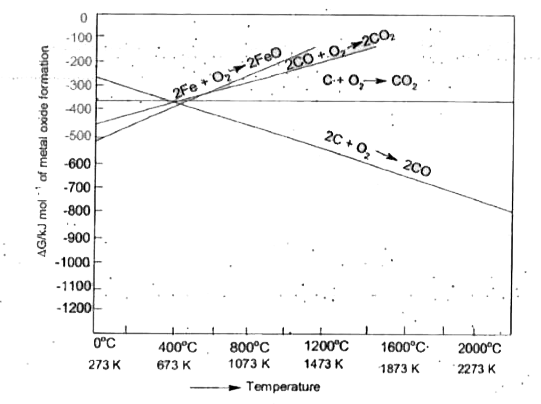Giving a suitable example, describe the importance of the formation of complex compounds in
(i) the estimation of hardness of water
(ii) the extraction of a particular metal from its natural source.
Step by step video & image solution for Giving a suitable example, describe the importance of the formation of complex compounds in (i) the estimation of hardness of water (ii) the extraction of a particular metal from its natural source. by Chemistry experts to help you in doubts & scoring excellent marks in Class 12 exams.
Updated on:21/07/2023Topper's Solved these Questions
- CORDINATION COMPOUNDSBOOK - PRADEEPCHAPTER - CORDINATION COMPOUNDSEXERCISE - Matching Type Question
5 Videos
- CORDINATION COMPOUNDSBOOK - PRADEEPCHAPTER - CORDINATION COMPOUNDSEXERCISE - Assertion And Reason Types Question
5 Videos
- CORDINATION COMPOUNDSBOOK - PRADEEPCHAPTER - CORDINATION COMPOUNDSEXERCISE - MCQ
190 Videos
- CHEMISTRY IN EVERYDAY LIFE BOOK - PRADEEPCHAPTER - CHEMISTRY IN EVERYDAY LIFE EXERCISE - IMPORTANT QUESTION FOR BOARD EXAMINATION
30 Videos
- D- AND F-BLOCK ELEMENTSBOOK - PRADEEPCHAPTER - D- AND F-BLOCK ELEMENTSEXERCISE - IMPORTANT QUESTIONS
30 Videos
Similar Questions
Name the functional group of organic compounds that can be hydrogenated .With the help of a suitable example explain the process of hydrogenation , mentioning the conditions of the reaction and any one change in physical property with the formation of the product. Name any one natural source of organic compounds that are hydrogenated
View SolutionGiving one example in each of the following cases, discuss briefly the role of coordination compounds in
(i) extraction metallurgy of metals
(ii) analytical chemistry
View Solution
Knowledge Check
Metals are extracted from their ores by a wide variety of techniques. The most common ores are oxides. Most metals are obtained by direct treatment of theirs ores with chemical agents, but the extraction of certain others require electrolysis. An example of the former type of process is the extraction of iron from its oxide, described by the following equation :
Fe2O3+3C→2Fe+3CO
The relative ease of extraction of a metal from its oxide can be estimated using the Ellingham diagram, as shown in the figure.
The diagram plots the free energies of formation of various oxides per mole of consumed oxygen as a function of absolute temperature.

All of the following reagents could be used to extract lead from its oxide exceptAMolecular fluorineBMolecular boronCMolecular NitrogenDElemental carbonMetals are extracted from their ores by a wide variety of techniques. The most common ores are oxides. Most metals are obtained by direct treatment of theirs ores with chemical agents, but the extraction of certain others require electrolysis. An example of the former type of process is the extraction of iron from its oxide, described by the following equation :
Fe2O3+3C→2Fe+3CO
The relative ease of extraction of a metal from its oxide can be estimated using the Ellingham diagram, as shown in the figure.
The diagram plots the free energies of formation of various oxides per mole of consumed oxygen as a function of absolute temperature.

Which of the following best explains why the free energy of formation of Fe2O3 becomes less negative as the temperature is increased.AThe free energy of formation is independent of the absolute temperature.BEntropy drops as a result of the consumption of oxygen.CAt low temperature, the free energy of formation becomes less dependent on the enthalpy of formation.DAs entropy increases, the free energy of formation increases.Metals are extracted from their ores by a wide variety of techniques. The most common ores are oxides. Most metals are obtained by direct treatment of theirs ores with chemical agents, but the extraction of certain others require electrolysis. An example of the former type of process is the extraction of iron from its oxide, described by the following equation :
Fe2O3+3C→2Fe+3CO
The relative ease of extraction of a metal from its oxide can be estimated using the Ellingham diagram, as shown in the figure.
The diagram plots the free energies of formation of various oxides per mole of consumed oxygen as a function of absolute temperature.
FIITJ∃CHEMB04_C02E07009_Q01.png width=80%><br>Whenferric⊗isreduced→obta∈ironmηl,CO_(2)orCOcanbe∏uced.The∏uctionofCO_(2)Ais directily proportional to the temperatureBis inversely proportional to the temperatureCis independent of the temperatureDrequires cooling of the CO
Describe the role of
(i) NaCN in the extraction of gold from its ore.
(ii) Cryolite in the extraction of aluminium from pure alumina
(iii) CO in the purification of Nickel.
View Solution(a) Which metal is extracted from bauxite ore ?
(b) Give the name of one ore of iron. Which iron compound is present in this ore ? Write its chemical formula.
(c). Describe the extraction of zinc metal from its sulphide ore (zinc blende). Write equations of the reactions involved.
(d) Explain why, the galvanised iron article is protected against rusting even if the zinc layer is broken.
(e) Name a common metal which is highly resistant to corrosion.
View SolutionDiscuss briefly giving an example in each case the role of coordination compounds in: (i) biological systems (iii) analytical chemistry (ii) medicinal chemistry and (iv) extraction/metallurgy of metals
View SolutionA trivalent metal M occurs in nature in the form of its oxide, M2O3 . The metal is widely used in making household utensils and bodiies of aircrafts.
The metal is widely used in making household utensils and bodies of aricrafts.
(i) Name the metal.
(ii) Name the chief ore of the metal.
(iii) Give the principles inviolved in the extraction of the metal from its ore.
View Solution(a) Name two metals which are found in free state in nature.
(b) What chemical process is used for extracting a metal from its oxide ore? Name one metal which is extracted by this method.
(c) Describe the extraction of zinc metal from its sulphide ore as well as its carbonate ore. Write equations of all the reactions involved.
View Solution
